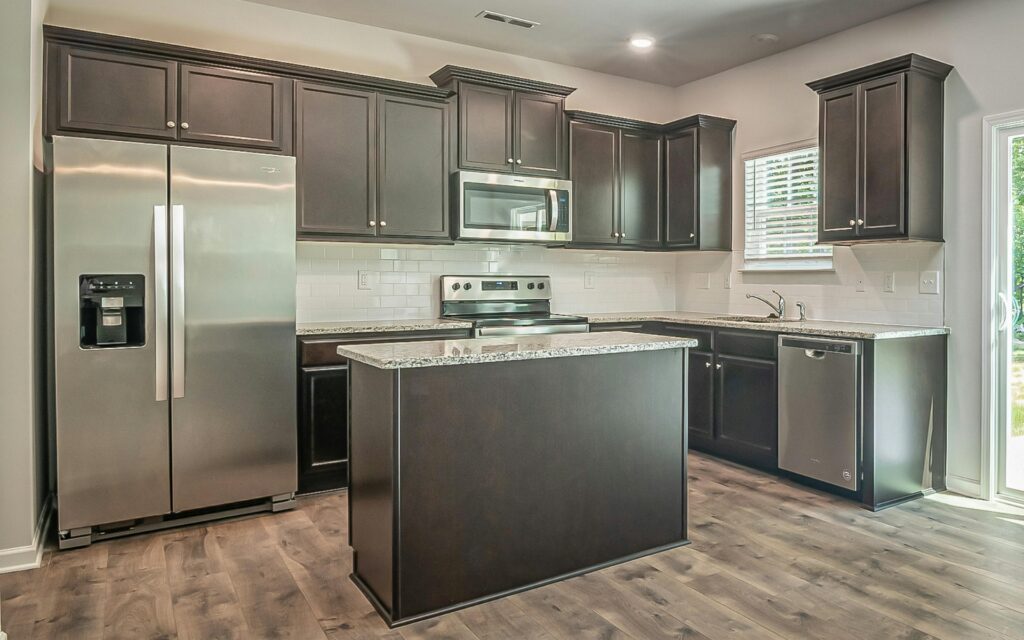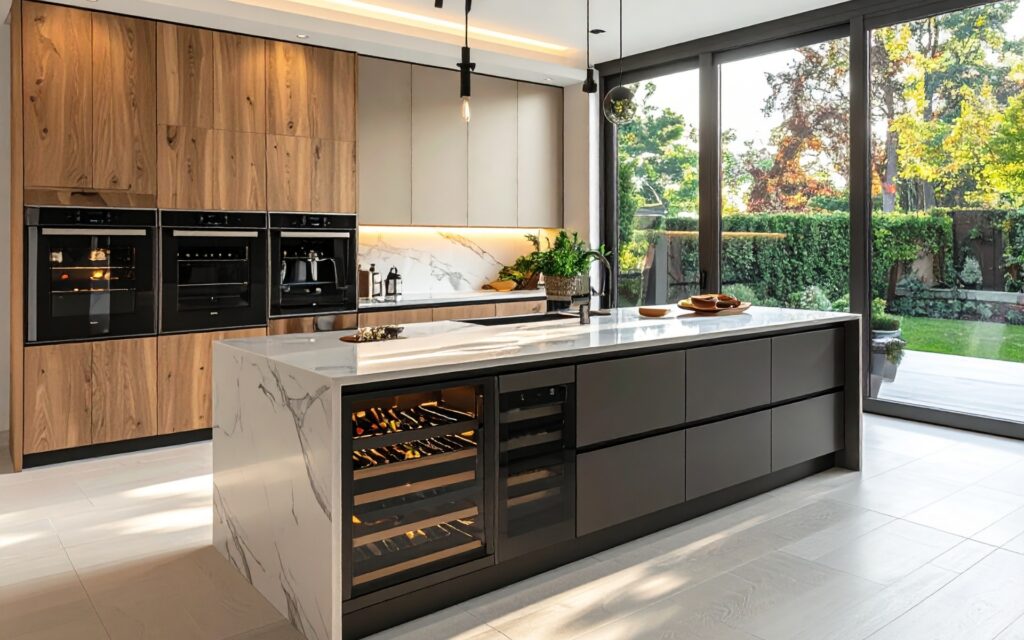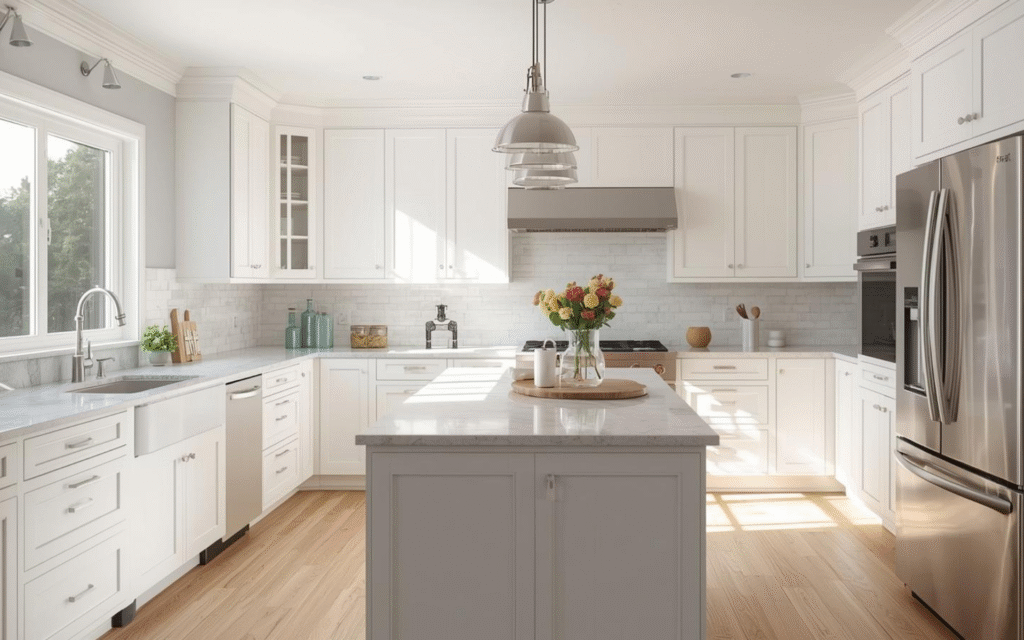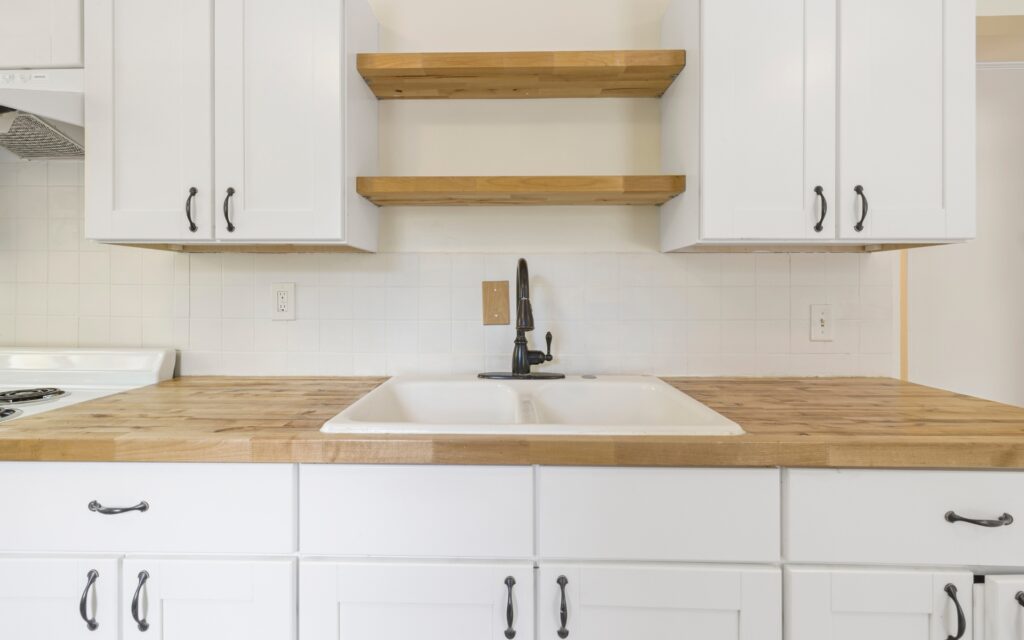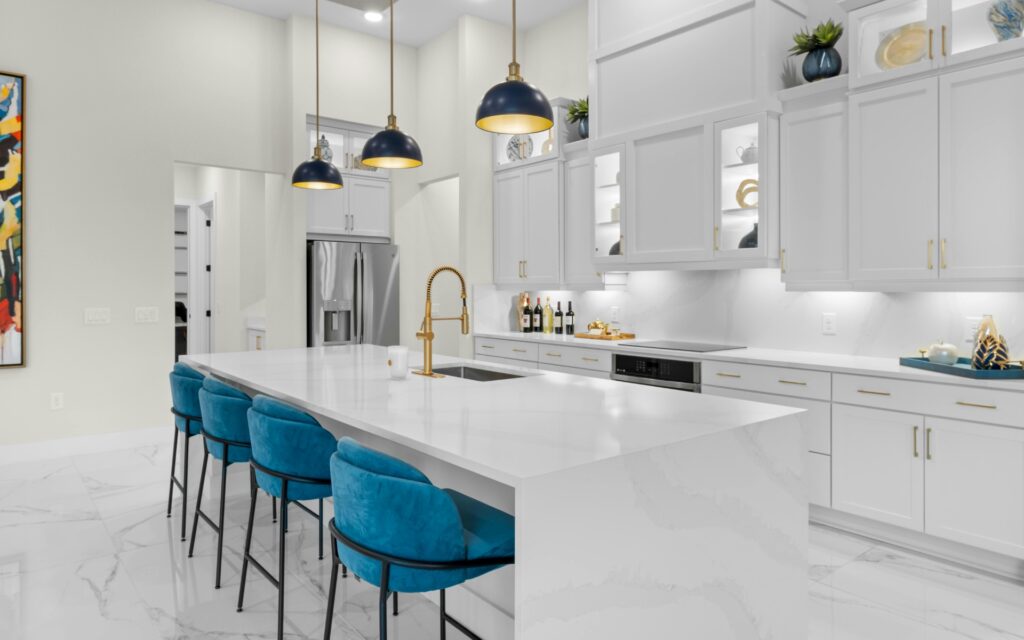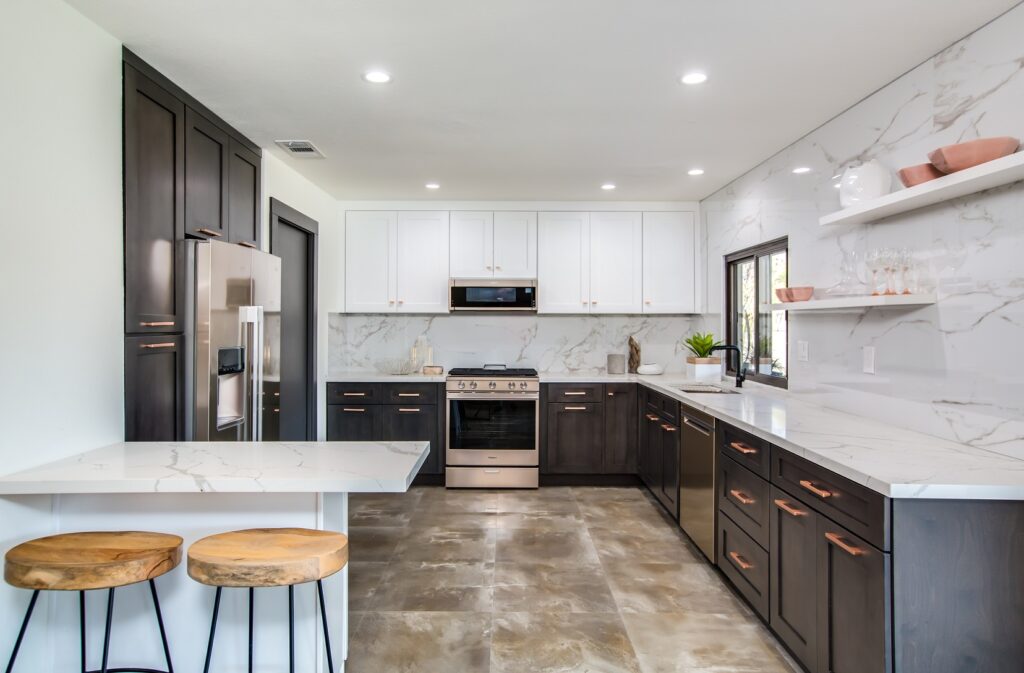You’ve been pricing out kitchen renovations, and the quotes are making your head spin. Custom cabinets cost a fortune, and even semi-custom options stretch your budget thin. That’s when you stumble across RTA kitchen cabinets and wonder if they’re too good to be true. Flat-pack cabinets that you assemble yourself at a fraction of the cost? It sounds almost sketchy, but thousands of homeowners are choosing this route and loving the results.
The ready-to-assemble cabinets aren’t some bargain-basement option anymore. Today’s RTA kitchen cabinets rival the quality of traditional pre-assembled units while saving you serious money on labor and shipping costs. According to the National Kitchen and Bath Association, RTA cabinets have gained significant market share as manufacturing quality has improved and more homeowners embrace DIY kitchen remodeling. This guide walks you through everything you need to know about RTA options, from quality considerations to assembly tips that’ll save you headaches.
What Are RTA Kitchen Cabinets?
Ready-to-Assemble cabinets arrive at your door in flat boxes with all the pieces, hardware, and instructions you need to put them together. Think high-end furniture from IKEA, but specifically designed for kitchens with construction quality that meets industry standards.
The concept is simple: manufacturers save money by shipping flat boxes instead of fully assembled cabinets, and they pass those savings on to you. Shipping assembled cabinets is expensive because you’re paying for air space. Flat-pack RTA kitchen cabinets stack efficiently, reducing freight costs by up to 50% compared to pre-assembled units.
You’ll handle the assembly yourself, which eliminates labor costs at the factory. Don’t let that scare you off, though. Most homeowners with basic tool skills can assemble these cabinets in a weekend. The real question isn’t whether you can do it, but whether the savings justify your time and effort.
RTA Kitchen Cabinets vs. Pre-Assembled
Cost savings grab attention first, but understanding what you’re actually getting matters more than the price tag alone. Let’s break down how RTA kitchen cabinets compare to traditional options in ways that actually affect your renovation.
Quality Construction of RTA Kitchen Cabinets Options
Gone are the days when RTA meant flimsy particleboard boxes held together with cam locks. Today’s quality RTA manufacturers use solid wood face frames, plywood box construction, and dovetail drawer joints. You’re getting the same construction methods found in pre-assembled cabinets from reputable brands.
High-quality RTA kitchen cabinets feature:
- 3/4-inch plywood boxes instead of particleboard
- Solid wood doors and face frames
- Full-extension soft-close drawer glides
- Concealed European hinges with soft-close technology
- Pre-finished interiors and exteriors
The catch? You need to know what to look for. Budget RTA options still use particleboard and cheap hardware, so not all Ready To Assemble cabinets deliver the same quality.
Time Investment: Assembly and Installation
Assembling cabinets takes time. No way around it. A typical 10×10 kitchen with 12 cabinets might require 8-12 hours of assembly time for someone with moderate DIY skills. Installation adds another full day or two, depending on your experience level.
Compare that to pre-assembled cabinets, where you skip straight to installation. For busy homeowners, the time savings of pre-assembled units might justify the extra cost. For weekend warriors who enjoy DIY projects, assembly becomes part bof the renovation experience rather than a burden.
Shipping and Handling Advantages
Flat boxes fit through doorways, up stairs, and into tight spaces where assembled cabinets won’t go. This matters more than you’d think, especially in older homes with narrow hallways or second-floor kitchens.
Delivery is simpler, too. Standard freight companies can deliver RTA kitchen cabinets without special equipment or white-glove service. You won’t need to schedule delivery windows or worry about professional installers damaging your walls while maneuvering bulky cabinets through your home.
Finding the Best RTA Cabinets for Your Kitchen
Not all Ready To Assemble cabinets meet the same quality standards, and sorting through dozens of online retailers gets overwhelming fast. Here’s what separates excellent RTA options from the ones you’ll regret buying.
Construction Materials That Actually Matter
Cabinet box material determines durability more than anything else. Plywood boxes hold screws better, resist moisture damage, and last decades. Particleboard or MDF boxes work fine in dry environments but can fail quickly near sinks or dishwashers.
Material hierarchy from best to acceptable:
- All-plywood construction – Premium durability, best moisture resistance
- Plywood box with MDF doors – Excellent balance of strength and smooth paint finish
- Furniture-grade particleboard – Acceptable for painted finishes in dry areas
- Standard particleboard – Avoid unless budget is the only consideration
Door construction matters too. Five-piece doors with solid wood frames and MDF centers accept paint beautifully while resisting warping. Solid wood doors throughout cost more but deliver that premium feel some homeowners want.
Hardware Quality Makes or Breaks Daily Use
Cheap hinges and drawer glides will frustrate you within months. Quality hardware operates smoothly for years and adds that premium feel when you open doors and drawers.
Look for European concealed hinges with soft-close mechanisms. These adjustable hinges let you fine-tune door alignment even after installation. Full-extension ball-bearing drawer glides with soft-close features should be standard, not upgrades.
Some RTA manufacturers cheap out on hardware while advertising quality construction. Read reviews specifically mentioning hardware performance before you commit to any brand.
Door Styles and Finish Options
RTA kitchen cabinets now come in virtually every style you’d find in custom cabinetry. Shaker remains the most popular choice, working in everything from farmhouse to contemporary kitchens. Raised-panel doors suit traditional designs, while flat-panel or slab doors create modern aesthetics.
Finish quality varies significantly between manufacturers. Factory-finished cabinets should have multiple coats of catalyzed varnish or conversion varnish that resists scratches and moisture. Cheap finishes chip easily and show wear within a year.
Paint finishes need special attention. Quality painted cabinets undergo extensive prep work, including sanding, priming, and multiple finish coats. Budget options often show brush marks, thin coverage, or poor adhesion.
The Best RTA Cabinets: Top Brands Worth Considering
Several manufacturers have built solid reputations in the Ready-To-Assemble market. While CabinetLand offers quality options, understanding what’s available industry-wide helps you make informed comparisons.
Premium RTA Kitchen Cabinets
High-end RTA manufacturers compete directly with semi-custom pre-assembled cabinets in quality while maintaining significant price advantages. These brands typically use all-plywood construction, premium hardware, and superior finishing processes.
Expect to pay $150-$300 per linear foot for premium RTA kitchen cabinets, which still undercuts similar quality pre-assembled options by 30-40%. These manufacturers often provide extensive customization options, including different heights, depths, and specialty cabinets.
Mid-Range RTA Choices
The sweet spot for most homeowners falls in the mid-range category. These cabinets use plywood boxes, solid wood doors, and quality hardware while keeping prices reasonable at $100-$200 per linear foot.
Mid-range options provide fewer customization choices than premium brands but cover all standard kitchen layouts. You’ll find all the popular door styles and finish colors without paying for extensive custom options you might not need.
Budget RTA Considerations
Entry-level RTA kitchen cabinets start around $75-$125 per linear foot. Construction quality varies significantly in this price range, so research becomes essential.
Some budget brands deliver surprising value using smart manufacturing and direct-to-consumer sales models. Others cut corners with particleboard construction and hardware that fails quickly. Study detailed reviews and ask about return policies before ordering budget options.
Maintaining Your RTA Kitchen Cabinets
Proper care keeps RTA kitchen cabinets looking great for decades. The same maintenance applies whether you paid $100 or $300 per linear foot, so developing good habits protects your investment regardless of budget level.
Daily and Weekly Care
Wipe spills immediately to prevent moisture damage, especially on painted finishes. Water sitting on cabinet surfaces can compromise finish adhesion and even damage wood underneath.
Clean cabinet exteriors weekly with a soft cloth dampened with mild soap and water. Avoid harsh chemicals, abrasive cleaners, or excessive water. A slightly damp cloth followed by immediate drying prevents most problems.
Pay special attention to cabinets near the sink and stove. Grease buildup and water splashes affect these areas most. Gentle cleaning prevents buildup that becomes harder to remove over time.
Long-Term Maintenance and Adjustments
European hinges on quality RTA kitchen cabinets allow adjustment even years after installation. Doors that don’t align perfectly can be adjusted using screws on the hinge mechanism. This adjustability is one advantage RTA cabinets share with high-end custom options.
Drawer glides occasionally need lubrication, especially in humid climates. Silicone spray lubricant works better than oil-based products that attract dust and grime.
Tighten screws and hardware connections annually. Vibrations from daily use gradually loosen connections. A quick check with a screwdriver prevents loose doors and drawers from becoming bigger problems.
Addressing Common Issues
Minor finish damage happens in active kitchens. Small scratches on painted surfaces can be touched up with matching paint applied carefully with a fine artist’s brush. Stained wood finishes are harder to repair invisibly but can be blended with furniture markers in matching tones.
Loose cam locks usually indicate over-tightening during assembly or humidity changes affecting the wood. Replacing damaged cam locks is straightforward and parts are readily available from most RTA manufacturers.
Water damage requires immediate attention. Cabinets near sinks or dishwashers are most vulnerable. If you notice swelling, peeling finish, or soft spots, identify and fix the water source immediately before damage spreads.
Making the Switch to RTA Kitchen Cabinets
You’ve got the information now, so the real question is whether RTA kitchen cabinets make sense for your specific situation. The answer depends on your budget, timeline, DIY comfort level, and quality expectations.
Ready-to-assemble cabinets deliver the best value when you’re willing to invest time instead of money. Assembly and installation require patience but not expert skills. CabinetLand helps Chicago-area homeowners choose the right cabinetry for their renovation projects, whether that’s RTA, semi-custom, or fully custom solutions. Visit our showroom to see construction quality firsthand, compare different manufacturers, and get expert guidance on making your kitchen vision a reality. Our team brings years of experience helping homeowners make confident decisions that they’ll love for years to come.

